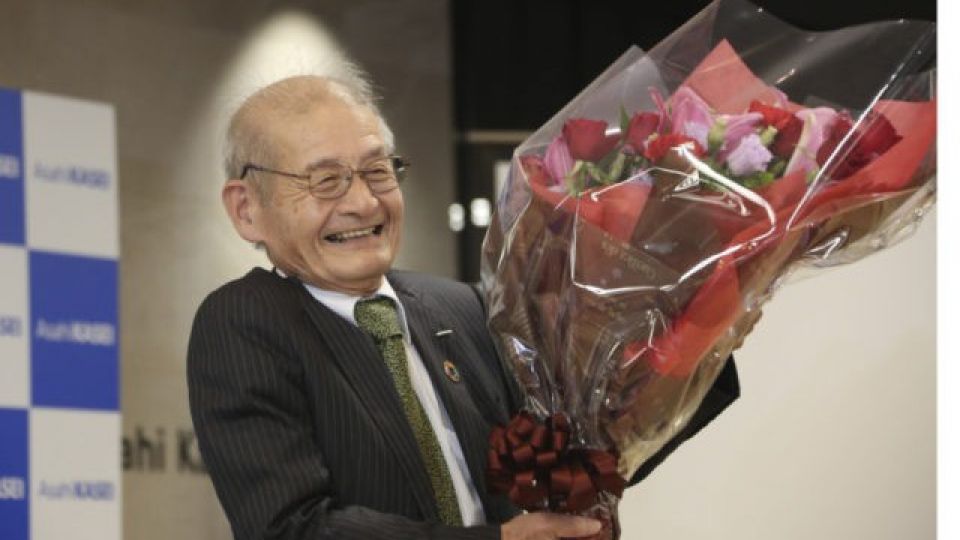October 11, 2019
Akira Yoshino was one of the three researchers who greatly contributed to the development and commercialization of a “dream battery,” laying the foundation of modern society.
New Nobel Prize winner Akira Yoshino was one of the researchers who greatly contributed to the development and commercialisation of a “dream battery,” which is small, light and rechargeable, and laid the foundation of modern society.
New Nobel Prize winner Akira Yoshino was one of the researchers who greatly contributed to the development and commercialization of a “dream battery,” which is small, light and rechargeable, and laid the foundation of modern society, symbolized by such mobile devices as smartphones and electric vehicles.
Yoshino, 71, an honorary fellow of Asahi Kasei Corp., was named on Wednesday as one of three winners of this year’s Nobel Prize in Chemistry for the development of lithium-ion batteries.
Origin in 1970s
Lithium-ion batteries had their origins in the 1970s. They were developed by Stanley Whittingham, 77, cowinner of the prize, who used metallic lithium for electrodes to generate voltage exceeding 2 volts. Metallic lithium, however, has not been put into practical use because it can generate heat when it reacts with other substances.
Another co-winner, John Goodenough, 97, found a way to generate even higher voltages. While studying in Britain in 1978, Goodenough worked on the development of materials for electrodes with Koichi Mizushima, 78, an executive fellow of Toshiba Corp. who was studying abroad as an assistant at the University of Tokyo.
Goodenough and Mizushima created a battery that used lithium-cobalt oxide, a lithium compound, as the positive electrode, or cathode. Their battery lasted only a few days but could generate about 4 volts. The researchers published the discovery in 1980. This was the starting point of the lithium-ion battery.
Mizushima released a comment on Wednesday night: “I am very happy that Mr. Goodenough has been awarded the prize. I feel honored to be one of his fellow researchers.”
Commercialization
Yoshino recognized the value of this research after he became involved in the development of rechargeable batteries at Asahi Kasei in 1981.
Yoshino came up with a way to use an electrically conducting plastic called polyacetylene as the negative electrode, or anode. Using lithium-cobalt oxide as the cathode, Yoshino produced a prototype battery that did not require unstable metal lithium.
He also developed a method to miniaturize the battery by using a special carbon fiber developed by Asashi Kasei as the anode. In 1985, he succeeded in recharging the battery. Thus was the prototype of the present lithium-ion battery completed.
In a separate project, Sony Corp. succeeded in mass-producing lithium-ion batteries for the first time in the world. The Sony team, led by Yoshio Nishi, now 77, independently developed an anode using carbon materials. The team applied a technology that was used for making cassette tapes to making thin electrodes with higher efficiency and succeeded in mass production in 1991, five years after it launched the development effort. Lithium-ion batteries have since spread around the world.


